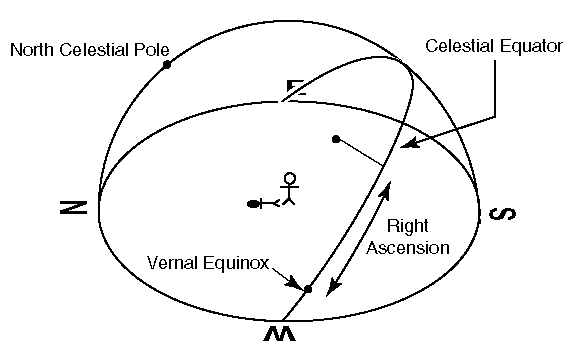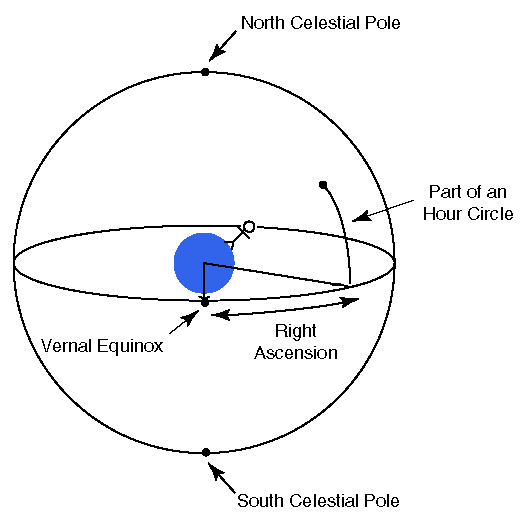
Right ascension (RA) is like longitude. It locates where a star is along the celestial equator. The zero point of longitude has been chosen to be where the line straight down from the Greenwich Observatory in England meets the equator. The zero point for right ascension is the vernal equinox. To find the right ascension of a star follow an hour circle "straight down" from the star to the celestial equator. The angle from the vernal equinox eastward to the foot of that hour circle is the star's right ascension.
There is one oddity in right ascension: the unit used to report the angle. Right ascensions are always recorded in terms of hours, minutes, and seconds. One hour of right ascension (1h) is 15°. Since 24x15°=360°, there are 24h of right ascension around the celestial equator. The reason for this oddity is that the celestial sphere makes one full rotation (24h of RA) in one day (24 hours of time). Thus the celestial sphere advances about 1h of RA in an hour of time.

